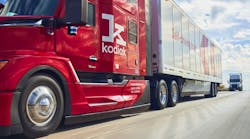Two months have passed since the National Motor Freight Classification (NMFC) Docket 2025-1 changes went into effect, and the industry is settling into a new reality. As vice president of operations at the National Motor Freight Traffic Association (NMFTA), I’ve had a front-row seat to how less-than-truckload (LTL) carriers, shippers, third-party logistics providers (3PLs), and technology providers have responded—and the stories I’m hearing point to one clear conclusion: Preparation made all the difference.
Preparation determines success in implementing NMFC Docket 2025-1
For those who took the time to prepare—updating systems, training teams, and testing processes—the rollout was remarkably quiet. These companies experienced minimal disruption, effectively absorbed the changes into their daily operations, and quickly resumed business as usual.
Others, however, are still updating their systems and processes. Those who underestimated the scope of the updates are now having to deal with issues like system mismatches, manual workarounds, and frustrated staff. The contrast is a powerful reminder that in our industry, readiness isn’t optional.
More than one carrier has told me this reminds them of Y2K. Back then, the fear was that systems worldwide would crash at midnight on January 1, 2000. In reality, nothing happened—not because the fears were unfounded, but because companies invested the time and resources necessary to prepare.
The same dynamic is currently unfolding. Yes, the transition was quiet. But that quiet was the sound of success—the payoff for months of work, planning, and collaboration. I’m proud to say that much of the credit goes to the efforts of NMFTA and our partners in equipping the industry with the tools, training, and support they needed to be ready.



